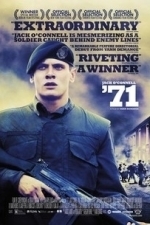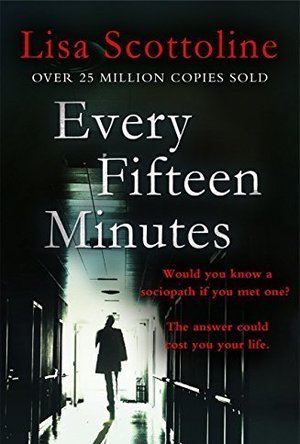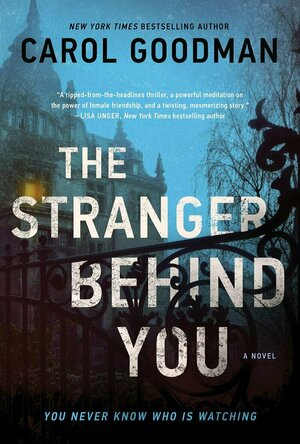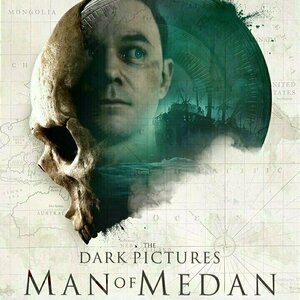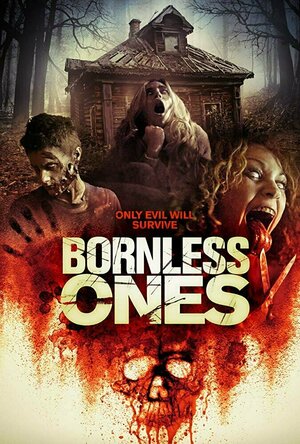Search
Search results
Story: 71 starts as we see Gary Hook (O’Connell) going through his training with his regiment before they get deployed to Belfast to deal with the riot situation. In Ireland the regiment receive their instructions and onto the Catholic side of the war. When the riots get out of hand Gary finds himself on the wrong side of the barrier alone and unarmed in the Irish territory.
With tensions rising Gary finds himself in the middle of the battle not knowing which side to trust as both side are preparing to attack each other as Gary learns the harsh reality of what these riots are causing.
71 puts us into the middle of the Irish riots showing just one soldier’s experience behind enemy lines, this works well. My issue with the story is unless you know the history which I only know the basics you are left kind of wondering why the riots are happening in the first place. Another problem I found was telling what was going on with the supporting characters like who was on whose side which I do understand adds to the mystery but in this situation we should be able to identify them easily. As a film about survival in an urban setting this is great though.
Actor Review
Jack O’Connell: Gary Hook is the young soldier who is on his first mission on the streets on Belfast during the riots of 71, trying to receive a lost weapon he gets separated by his unit and stranded alone behind enemy lines never sure who to trust. Jack is great in this leading role in what was an outstanding year for the young actor.gary
Sam Reid: Lt. Armitage is one of the men that wants to start searching for Gary but constantly gets put down Captain Browning. Sam is solid in this role but doesn’t get enough screen time.
Sean Harris: Captain Sandy Browning is the man running the situation he knows that Gary is alive but really is playing both sides of the battle. Sean is also solid but only in a supporting role.
Killian Scott: Quinn is one of the leaders out trying to kill Gary, he takes his men and boys out on the streets on the hunt for him and will hurt anyone who gets in his way. Killian is good in what seems like one of the primary villains.
Support Cast: 71 has a large supporting cast but working out which side they are on gets confusing at times.
Director Review: Yann Demange – Yann gives us wonderfully shot sequences throughout but not enough back story to the events on the film.
Action: 71 has intensely shot action sequences involved.
Thriller: 71 keeps us on edge as we watch Gary trying to survive the warzone.
War: 71 puts us into a warzone as we see Gary trying to avoid conflict seemingly around every single corner.
Settings: 71 puts us in the warzone of the Belfast streets which really works to pull us into the story.
Special Effects: 71 has great effects when needed without having to just go overboard with them.
Suggestion: 71 is one for fans of the genre but otherwise people might find it slightly hard to keep up with. (War Film Fans Watch)
Best Part: Bomb shock.
Worst Part: Not enough history of the events.
Believability: The riots were real but story is fictional.
Chances of Tears: No
Chances of Sequel: No
Post Credits Scene: No
Similar Too: Behind Enemy Lines
Awards: Nominated for One BAFTA.
Oscar Chances: No
Runtime: 1 Hour 39 Minutes
Trivia: Most scenes within the film were shot in Northern England, not in the film’s setting of Belfast.
Overall: Good history war thriller that is intense but never fully drags you into believing everything.
https://moviesreview101.com/2016/11/08/71-2014/
With tensions rising Gary finds himself in the middle of the battle not knowing which side to trust as both side are preparing to attack each other as Gary learns the harsh reality of what these riots are causing.
71 puts us into the middle of the Irish riots showing just one soldier’s experience behind enemy lines, this works well. My issue with the story is unless you know the history which I only know the basics you are left kind of wondering why the riots are happening in the first place. Another problem I found was telling what was going on with the supporting characters like who was on whose side which I do understand adds to the mystery but in this situation we should be able to identify them easily. As a film about survival in an urban setting this is great though.
Actor Review
Jack O’Connell: Gary Hook is the young soldier who is on his first mission on the streets on Belfast during the riots of 71, trying to receive a lost weapon he gets separated by his unit and stranded alone behind enemy lines never sure who to trust. Jack is great in this leading role in what was an outstanding year for the young actor.gary
Sam Reid: Lt. Armitage is one of the men that wants to start searching for Gary but constantly gets put down Captain Browning. Sam is solid in this role but doesn’t get enough screen time.
Sean Harris: Captain Sandy Browning is the man running the situation he knows that Gary is alive but really is playing both sides of the battle. Sean is also solid but only in a supporting role.
Killian Scott: Quinn is one of the leaders out trying to kill Gary, he takes his men and boys out on the streets on the hunt for him and will hurt anyone who gets in his way. Killian is good in what seems like one of the primary villains.
Support Cast: 71 has a large supporting cast but working out which side they are on gets confusing at times.
Director Review: Yann Demange – Yann gives us wonderfully shot sequences throughout but not enough back story to the events on the film.
Action: 71 has intensely shot action sequences involved.
Thriller: 71 keeps us on edge as we watch Gary trying to survive the warzone.
War: 71 puts us into a warzone as we see Gary trying to avoid conflict seemingly around every single corner.
Settings: 71 puts us in the warzone of the Belfast streets which really works to pull us into the story.
Special Effects: 71 has great effects when needed without having to just go overboard with them.
Suggestion: 71 is one for fans of the genre but otherwise people might find it slightly hard to keep up with. (War Film Fans Watch)
Best Part: Bomb shock.
Worst Part: Not enough history of the events.
Believability: The riots were real but story is fictional.
Chances of Tears: No
Chances of Sequel: No
Post Credits Scene: No
Similar Too: Behind Enemy Lines
Awards: Nominated for One BAFTA.
Oscar Chances: No
Runtime: 1 Hour 39 Minutes
Trivia: Most scenes within the film were shot in Northern England, not in the film’s setting of Belfast.
Overall: Good history war thriller that is intense but never fully drags you into believing everything.
https://moviesreview101.com/2016/11/08/71-2014/
Kristy H (1252 KP) rated Every Fifteen Minutes in Books
Feb 1, 2018
Dr. Eric Parrish is a busy psychiatrist juggling his work as Chief at a hospital unit, as well as his own private practice. He is also reeling from his recent separation from his wife and the subsequent time he must spend away from his daughter, Hannah, who is only seven-years-old. One day, Eric is called to treat an elderly woman who is dying from cancer, but it quickly becomes clear the real patient is her grandson Max, who, at 17, is having difficulty dealing with his grandmother's impending death. Eric quickly discovers that Max is depressed, struggling with OCD, and having violent thoughts about a girl he knows from his job. However, as Eric treats Max, he suddenly finds his own life breaking apart around him. There is a murder, a violent incident, problems with his wife and daughter, issues at work, and much more.
I never really got "into" this book. To me, Eric is not a likeable character. Throughout the course of the novel he seems to make a remarkable number of questionable decisions, even if his life is somewhat spiraling out of control. For instance, as he goes through the divorce with Caitlin, Eric is constantly lamenting about Hannah and the effects of the divorce on her. So much so that he comes by the house unasked, calls his wife and daughter at all hours, completely ignores the advice of his lawyer, etc. He seems to lack knowledge of any basic divorce or legal protocol - not to mention common sense.
The lack of common sense prevails throughout the book. So much of the plot is supposedly driven by what Eric knows about Max, this teenage kid he meets at the hospital, but really they have two sessions together before things go awry. It seems insane that he would have learned so much about his patient in this time. So much of the plot just seemed implausible and annoying. We hear constant talk about Eric's past anxiety and how he overcame it. OK - so what?
Overall, I just found myself irritated by Eric and annoyed by his decisions. Parts of the book seem completely improbable and the plot is so thinly constructed that once you figure out how everything comes together, it seems barely possible. Then Scottoline throws in another twist that seems completely unnecessary. Overall, rather disappointing read.
I never really got "into" this book. To me, Eric is not a likeable character. Throughout the course of the novel he seems to make a remarkable number of questionable decisions, even if his life is somewhat spiraling out of control. For instance, as he goes through the divorce with Caitlin, Eric is constantly lamenting about Hannah and the effects of the divorce on her. So much so that he comes by the house unasked, calls his wife and daughter at all hours, completely ignores the advice of his lawyer, etc. He seems to lack knowledge of any basic divorce or legal protocol - not to mention common sense.
The lack of common sense prevails throughout the book. So much of the plot is supposedly driven by what Eric knows about Max, this teenage kid he meets at the hospital, but really they have two sessions together before things go awry. It seems insane that he would have learned so much about his patient in this time. So much of the plot just seemed implausible and annoying. We hear constant talk about Eric's past anxiety and how he overcame it. OK - so what?
Overall, I just found myself irritated by Eric and annoyed by his decisions. Parts of the book seem completely improbable and the plot is so thinly constructed that once you figure out how everything comes together, it seems barely possible. Then Scottoline throws in another twist that seems completely unnecessary. Overall, rather disappointing read.

InfusiCalc
Medical and Education
App
InfusiCalc is a drug dose calculator which can be used for either continuous infusions or bolus...
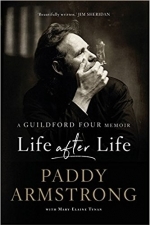
Life After Life: A Guildford Four Memoir
Book
What is it like to spend 15 years in prison for a crime you didn’t commit? Paddy Armstrong was...
biography crime true crime
Kristy H (1252 KP) rated The Stranger Behind You in Books
Jul 15, 2021
An atmospheric and twisty thriller
Reporter Joan Lurie becomes famous when her story in Manhatta exposes Globe owner Caspar Osgood as a sexual harasser. But as she returns home the night of the publication, she's attacked in her apartment. Terrified and feeling ill from a severe blow to the head, she moves to a super secure building in Manhattan, called the Refuge, to write a book that further details what she's discovered about Casper. At the Refuge, she meets her elderly neighbor, Lillian, who has lived there since it was the Magdalen Laundry and Refuge for Fallen Women in the 1940s. She becomes sucked into Lillian's stories, which often remind Joan of her own life. Meanwhile, Caspar's wife Melissa must deal with the aftermath of learning her husband is sexual predator. Soon, these women's lives will intertwine: in potentially dangerous ways.
"I'm here because four weeks ago someone tried to kill me."
This was an often confusing but incredibly intriguing book that combines the #MeToo movement with a story about wayward girls. You're never quite sure what's going on, as Joan can be an unreliable narrator (head injury + fear, anyone?), leaving one feeling very off balance for the entire book. There's a story within a story here, as Joan goes after Caspar and his transgressions, combined with Lillian's story and her past.
"What kind of person is more concerned about their hard drive than their body?"
I loved the 1940s piece, learning about Lily, the Magdalen laundry, and the Refuge when it was a home for girls. It's fascinating even while being quite sad. Joan could be a very frustrating character (just go to the doctor for your head injury and stop drinking already), but you cannot fault her reporting skills. Caspar's wife Melissa adds a certain depth to the tale, as she wrestles with what her husband has done. Telling the story from Joan and Melissa's point of view really expands what we learn. This is also an atmospheric read, with the Refuge becoming its own character, especially as we learn about its history from the 1940s on. Goodman is always excellent at setting the scene.
While I sometimes found this book frustrating, it was also a page-turner, with compelling characters and an interesting story with some great twists. 4 stars.
"I'm here because four weeks ago someone tried to kill me."
This was an often confusing but incredibly intriguing book that combines the #MeToo movement with a story about wayward girls. You're never quite sure what's going on, as Joan can be an unreliable narrator (head injury + fear, anyone?), leaving one feeling very off balance for the entire book. There's a story within a story here, as Joan goes after Caspar and his transgressions, combined with Lillian's story and her past.
"What kind of person is more concerned about their hard drive than their body?"
I loved the 1940s piece, learning about Lily, the Magdalen laundry, and the Refuge when it was a home for girls. It's fascinating even while being quite sad. Joan could be a very frustrating character (just go to the doctor for your head injury and stop drinking already), but you cannot fault her reporting skills. Caspar's wife Melissa adds a certain depth to the tale, as she wrestles with what her husband has done. Telling the story from Joan and Melissa's point of view really expands what we learn. This is also an atmospheric read, with the Refuge becoming its own character, especially as we learn about its history from the 1940s on. Goodman is always excellent at setting the scene.
While I sometimes found this book frustrating, it was also a page-turner, with compelling characters and an interesting story with some great twists. 4 stars.

Electronics Engineering ToolKit PRO for iPad
Productivity and Education
App
This is the brand-new Electronics Engineering ToolKit PRO for iPad! The HIGHLY RATED and RECOMMENDED...
Sarah (7800 KP) rated the PlayStation 4 version of The Dark Pictures Anthology: Man of Medan in Video Games
May 29, 2020
A thrilling play
Games like this dont appeal to everyone. It's not full of action, beating people up or a massive open world full of free play. It also doesnt drag on for 40+ hours. However for people like me who struggle with those type of games, Man of Medan is a breath of fresh air.
I'd previously played and rather enjoyed Until Dawn, and I'm pleased to say this follows much in the same vein although it's probably a much shorter story. Graphically this is very impressive looking and like Until Dawn, they've thrown in yet another recognisable face (this time it's Shawn Ashmore aka Bobby from X-Men). The characters look amazing and the setting too. The story too is a good and interesting one, although it does feel a little similar to other stories (like Ghost Ship) and may be a tad predictable. We worked out what was going on well before the third act. That said, I still found it to be absolutely terrifying. Playing a game like this is a lot scarier than watching any horror film!
The gameplay works really well. The fact that you can play this with friends, either online or couch co-op, adds another fun dimension to it all. The decision making also means that there are so many different endings and outcomes (I believe there's over 60 possible ways for the characters to die) that the replayability is surprisingly better than you'd expect. Admittedly it would probably get a bit tedious trying to uncover absolutely everything and all possible outcomes, but playing a few times over is still enjoyable.
The only downsides are the lag and load issues. Most likely due to the decision making process and actions, there is a noticeable lag in some of the cut scenes and movements which is bearable but can noticeably affect the smooth running of the game. There's also the characters themselves. They look great, but they're very cliched and have very little personality or interest too them. And the script is a little cheesy at times which only further impacts with a slight dislike of the characters. Part of me actually wanted to kill them all off...
Overall a great story and an interesting game to play, if you're looking for something a little different.
I'd previously played and rather enjoyed Until Dawn, and I'm pleased to say this follows much in the same vein although it's probably a much shorter story. Graphically this is very impressive looking and like Until Dawn, they've thrown in yet another recognisable face (this time it's Shawn Ashmore aka Bobby from X-Men). The characters look amazing and the setting too. The story too is a good and interesting one, although it does feel a little similar to other stories (like Ghost Ship) and may be a tad predictable. We worked out what was going on well before the third act. That said, I still found it to be absolutely terrifying. Playing a game like this is a lot scarier than watching any horror film!
The gameplay works really well. The fact that you can play this with friends, either online or couch co-op, adds another fun dimension to it all. The decision making also means that there are so many different endings and outcomes (I believe there's over 60 possible ways for the characters to die) that the replayability is surprisingly better than you'd expect. Admittedly it would probably get a bit tedious trying to uncover absolutely everything and all possible outcomes, but playing a few times over is still enjoyable.
The only downsides are the lag and load issues. Most likely due to the decision making process and actions, there is a noticeable lag in some of the cut scenes and movements which is bearable but can noticeably affect the smooth running of the game. There's also the characters themselves. They look great, but they're very cliched and have very little personality or interest too them. And the script is a little cheesy at times which only further impacts with a slight dislike of the characters. Part of me actually wanted to kill them all off...
Overall a great story and an interesting game to play, if you're looking for something a little different.
365Flicks (235 KP) rated Bornless Ones (2016) in Movies
Nov 20, 2019
Take 4 Outrageously good looking guys and gals, A 5th guy with some sort of life challenging disease… Move them into a new out of the way house with a secret history, not to far from an Institution, Have them desecrate and destroy what look to be supernatural symbols boarding up the windows and you have Bornless Ones… Oh and there is scary possession, Craziness and a fair bit of really well done gore, Seriously well done Gore!!!
Now that’s not to say that this movie lacks originality in any way because it really does not. Ok we may have seen the creepy house in the middle of nowhere that scares the crap out of its occupants before, but can we really ever get too much of that. The difference I found was that Bornless Ones is in many ways a spiritual cousin to movies like Evil Dead and in many ways actually betters what has come before in its Genre. One of those ways is the performance our cast put in.
Emily (Margaret Judson – The Newsroom) has decided that she cant look after her Cerebal Palsy suffering brother Zach (Micheal Johnston – MTV’s Teen Wolf) anymore, she is going to move him to an institution. However fearing he is going to be too far away from her, Emily and her boyfriend Jesse (Devin Goodsell) buy a house nearby, the house has a past. Emily and Jesse are accompanied by there friends Woodrow (Mark Furze – Home and Away, Underbelly) and Michelle (Bobby T) to help them move in. That’s when the movie cranks it up to 11 and everything goes nuts as our core characters are taken hold of by a paranormal force one by one and must fight for survival.
My horror kick has absolutely continued into 2017 and Bornless Ones was a fantastic place to start. Its a hell of a lot more Evil Dead than the Evil Dead Remake which sucked and this movie really had me in from the start. It does help that it wastes no time at all, no sooner had they all moved in and the shenanigans began.
Alexander Babaev has done a great job on Directing and Writing with this movie and while it falls into the Indie bracket of movies it deserves to be seen by a wider audience. The acting from our core cast is better than you might expect, infact they all smash it out of the park. The acting once possession has taken hold is creepy as shit and utterly compelling.
Bornless Ones is definitely worth a watch if you are a fan of this genre, it is a lot better than most of the possession movies coming out these days. Give it a try…
Now that’s not to say that this movie lacks originality in any way because it really does not. Ok we may have seen the creepy house in the middle of nowhere that scares the crap out of its occupants before, but can we really ever get too much of that. The difference I found was that Bornless Ones is in many ways a spiritual cousin to movies like Evil Dead and in many ways actually betters what has come before in its Genre. One of those ways is the performance our cast put in.
Emily (Margaret Judson – The Newsroom) has decided that she cant look after her Cerebal Palsy suffering brother Zach (Micheal Johnston – MTV’s Teen Wolf) anymore, she is going to move him to an institution. However fearing he is going to be too far away from her, Emily and her boyfriend Jesse (Devin Goodsell) buy a house nearby, the house has a past. Emily and Jesse are accompanied by there friends Woodrow (Mark Furze – Home and Away, Underbelly) and Michelle (Bobby T) to help them move in. That’s when the movie cranks it up to 11 and everything goes nuts as our core characters are taken hold of by a paranormal force one by one and must fight for survival.
My horror kick has absolutely continued into 2017 and Bornless Ones was a fantastic place to start. Its a hell of a lot more Evil Dead than the Evil Dead Remake which sucked and this movie really had me in from the start. It does help that it wastes no time at all, no sooner had they all moved in and the shenanigans began.
Alexander Babaev has done a great job on Directing and Writing with this movie and while it falls into the Indie bracket of movies it deserves to be seen by a wider audience. The acting from our core cast is better than you might expect, infact they all smash it out of the park. The acting once possession has taken hold is creepy as shit and utterly compelling.
Bornless Ones is definitely worth a watch if you are a fan of this genre, it is a lot better than most of the possession movies coming out these days. Give it a try…
Darren (1599 KP) rated Morning Glory (2010) in Movies
Jul 25, 2019
Story: Morning Glory starts as we follow Becky (McAdams) a new producer dreaming of one day going to the next level, when she believes she is about to get the senior producer role she finds herself losing her job instead. Not one to give up on her dreams to searches endlessly for a new job in the business and it is Jerry Barnes (Goldblum) that gives her a chance to work on saving the fourth best morning news station Daybreak.
Wanting to make an impact Becky fires the demoralising anchor, Becky must find a new anchor and her choice is going after News Icon Mike Pomperoy (Ford) who is under contract but doesn’t want to work. Becky must find a way for Mike to work with her current anchor Colleen Peck (Keaton) while making new friends with fellow producer Adam Bennett (Wilson) offering up a potential love interest.
Thoughts on Morning Glory
Characters/Performance – Becky is an ambitious young woman desperate to make a career in producing the news. She gets her chance working on the lowest rated show and must use all of her good spirit and ideas to make the show climb the ratings, all while dealing with her own personal life that she has given up making her career important. This is a brilliant character because it shows how people can put their career before their own lives which is why this is something we have seen before but always good to go back too.
Mike is the difficult anchor to work with, he used to be a draw in the news reporting world but isn’t interested in working on anything he doesn’t think is news worth, he makes the job as difficult as possible for Becky by doing the bare minimum. Colleen is the seasoned anchor that is happy to take a chance on the wild stories that can bring in the ratings. Adam is the love interest for Becky as well as being involved with Mike before so he can give Becky advice when it comes to handling him.
Performance wise, McAdams is great in the leading role, not playing it overly funny which is how you can judge the whole cast, Ford does enjoy this role because it is different to the rest of his normal action material.
Story – The story following a career driven woman following her dream putting everything she has into making it happen against all the odds if something that is fantastic to watch because we all like to enjoy watching someone reach that goal. Sure, most of this film does go around in the cycle you would expect but if it isn’t broken don’t fix it.
Romantic/Comedy – The romantic side is on the main story which I think works because it isn’t the most important part of the film, the comedy comes when needed without being a constant attempt at laughter.
Settings – The settings for this film are mostly inside the news studio which shows how close everyone must be to work together. This helps us see how the tension looks between the characters.
Final Thoughts – I wasn’t expecting too much from this film going in, mostly because of the genres but in the end, I found myself enjoying everything as it was unfolding.
Overall: This is a good comedy drama that is worth watching.
Wanting to make an impact Becky fires the demoralising anchor, Becky must find a new anchor and her choice is going after News Icon Mike Pomperoy (Ford) who is under contract but doesn’t want to work. Becky must find a way for Mike to work with her current anchor Colleen Peck (Keaton) while making new friends with fellow producer Adam Bennett (Wilson) offering up a potential love interest.
Thoughts on Morning Glory
Characters/Performance – Becky is an ambitious young woman desperate to make a career in producing the news. She gets her chance working on the lowest rated show and must use all of her good spirit and ideas to make the show climb the ratings, all while dealing with her own personal life that she has given up making her career important. This is a brilliant character because it shows how people can put their career before their own lives which is why this is something we have seen before but always good to go back too.
Mike is the difficult anchor to work with, he used to be a draw in the news reporting world but isn’t interested in working on anything he doesn’t think is news worth, he makes the job as difficult as possible for Becky by doing the bare minimum. Colleen is the seasoned anchor that is happy to take a chance on the wild stories that can bring in the ratings. Adam is the love interest for Becky as well as being involved with Mike before so he can give Becky advice when it comes to handling him.
Performance wise, McAdams is great in the leading role, not playing it overly funny which is how you can judge the whole cast, Ford does enjoy this role because it is different to the rest of his normal action material.
Story – The story following a career driven woman following her dream putting everything she has into making it happen against all the odds if something that is fantastic to watch because we all like to enjoy watching someone reach that goal. Sure, most of this film does go around in the cycle you would expect but if it isn’t broken don’t fix it.
Romantic/Comedy – The romantic side is on the main story which I think works because it isn’t the most important part of the film, the comedy comes when needed without being a constant attempt at laughter.
Settings – The settings for this film are mostly inside the news studio which shows how close everyone must be to work together. This helps us see how the tension looks between the characters.
Final Thoughts – I wasn’t expecting too much from this film going in, mostly because of the genres but in the end, I found myself enjoying everything as it was unfolding.
Overall: This is a good comedy drama that is worth watching.
JT (287 KP) rated Fast & Furious 6 (2013) in Movies
Mar 10, 2020
I've been a fan of this franchise since the very first film, and while Tokyo Drift might have been a little blip, or bump in the road, there is no denying that the films have delivered box office success. Fast and Furious 6 is the second film to be left on a cliffhanger (we’ll get to that later) and delves deep into the story of the mystery surrounding Letty’s (Michelle Rodriguez) death a few films ago. I don’t regard that as a plot spoiler as it’s in the trailer. Having demolished most of Rio and now living peacefully in a country with no extradition Dom and new dad Brian think that they have put all their troubles behind them.
After the opening credits montage, agent Hobbs (Johnson) comes knocking. His offer requires all the team converge once again, this time they have to track down and capture a ruthless mercenary called Owen Shaw (Luke Evans). Hobbs and Toretto have to stand side by side working together to take down the villain. Letty of course has returned and is working for the bad guys but has no memory of her past life. If you’re a true fan then the plot will reveal more back story and as it turns out part six is practically a sequel to part four with past villains announcing a few home truths.
The film and action is set in the heart of London which, includes a car chase that defies belief, a ménage à trois of fist fights on the underground, shoot outs and a drag race that drifts through Piccadilly Circus. The action is pulsating and over the top but you shouldn’t care in the least about that. What were you expecting the film to do? Each vehicular sequence is more mind bending than the next.
Take the opening chase for example. A modified F1 style car pursued by Toretto and his crew as well as local police weaves its way through the streets with the ability to flip oncoming cars. Justin Lin who directed the last four films is well in control and more than happy to up the action.
Fast and Furious 6 is guilty of plot holes, but these will only be deconstructed by people who have nothing better to do. That said, even I was left wondering what distance the longest runway in the world was? There is a good level of humour with Tyrese Gibson’s Roman providing much of the light heartedness that the film needed. Let’s face it The Avengers had the same level of action and humour mixed and that seemed to work.
One of the dangers for this was having a cast that was pretty extensive, regrouping the team meant that there was jostling for position. But on the whole everyone has their time to shine and no one is really cast to the shadows. Evans does a good job as the main antagonist and Gina Carano also proves her worth after the abject Haywire a few years back.
Fast and Furious 7 takes place back in LA after the events of this film and has a teasing post credit sequence that will bait those fans to come back once again. James Wan steps into the directors chair for the seventh film switching from the comfort of the horror genre. I found Fast and Furious 6 to be a highly entertaining film, and you’ll need to check your brain in at the door. To quote a cliché it ‘does what it says on the tin’, and doesn’t take itself too seriously.
After the opening credits montage, agent Hobbs (Johnson) comes knocking. His offer requires all the team converge once again, this time they have to track down and capture a ruthless mercenary called Owen Shaw (Luke Evans). Hobbs and Toretto have to stand side by side working together to take down the villain. Letty of course has returned and is working for the bad guys but has no memory of her past life. If you’re a true fan then the plot will reveal more back story and as it turns out part six is practically a sequel to part four with past villains announcing a few home truths.
The film and action is set in the heart of London which, includes a car chase that defies belief, a ménage à trois of fist fights on the underground, shoot outs and a drag race that drifts through Piccadilly Circus. The action is pulsating and over the top but you shouldn’t care in the least about that. What were you expecting the film to do? Each vehicular sequence is more mind bending than the next.
Take the opening chase for example. A modified F1 style car pursued by Toretto and his crew as well as local police weaves its way through the streets with the ability to flip oncoming cars. Justin Lin who directed the last four films is well in control and more than happy to up the action.
Fast and Furious 6 is guilty of plot holes, but these will only be deconstructed by people who have nothing better to do. That said, even I was left wondering what distance the longest runway in the world was? There is a good level of humour with Tyrese Gibson’s Roman providing much of the light heartedness that the film needed. Let’s face it The Avengers had the same level of action and humour mixed and that seemed to work.
One of the dangers for this was having a cast that was pretty extensive, regrouping the team meant that there was jostling for position. But on the whole everyone has their time to shine and no one is really cast to the shadows. Evans does a good job as the main antagonist and Gina Carano also proves her worth after the abject Haywire a few years back.
Fast and Furious 7 takes place back in LA after the events of this film and has a teasing post credit sequence that will bait those fans to come back once again. James Wan steps into the directors chair for the seventh film switching from the comfort of the horror genre. I found Fast and Furious 6 to be a highly entertaining film, and you’ll need to check your brain in at the door. To quote a cliché it ‘does what it says on the tin’, and doesn’t take itself too seriously.
